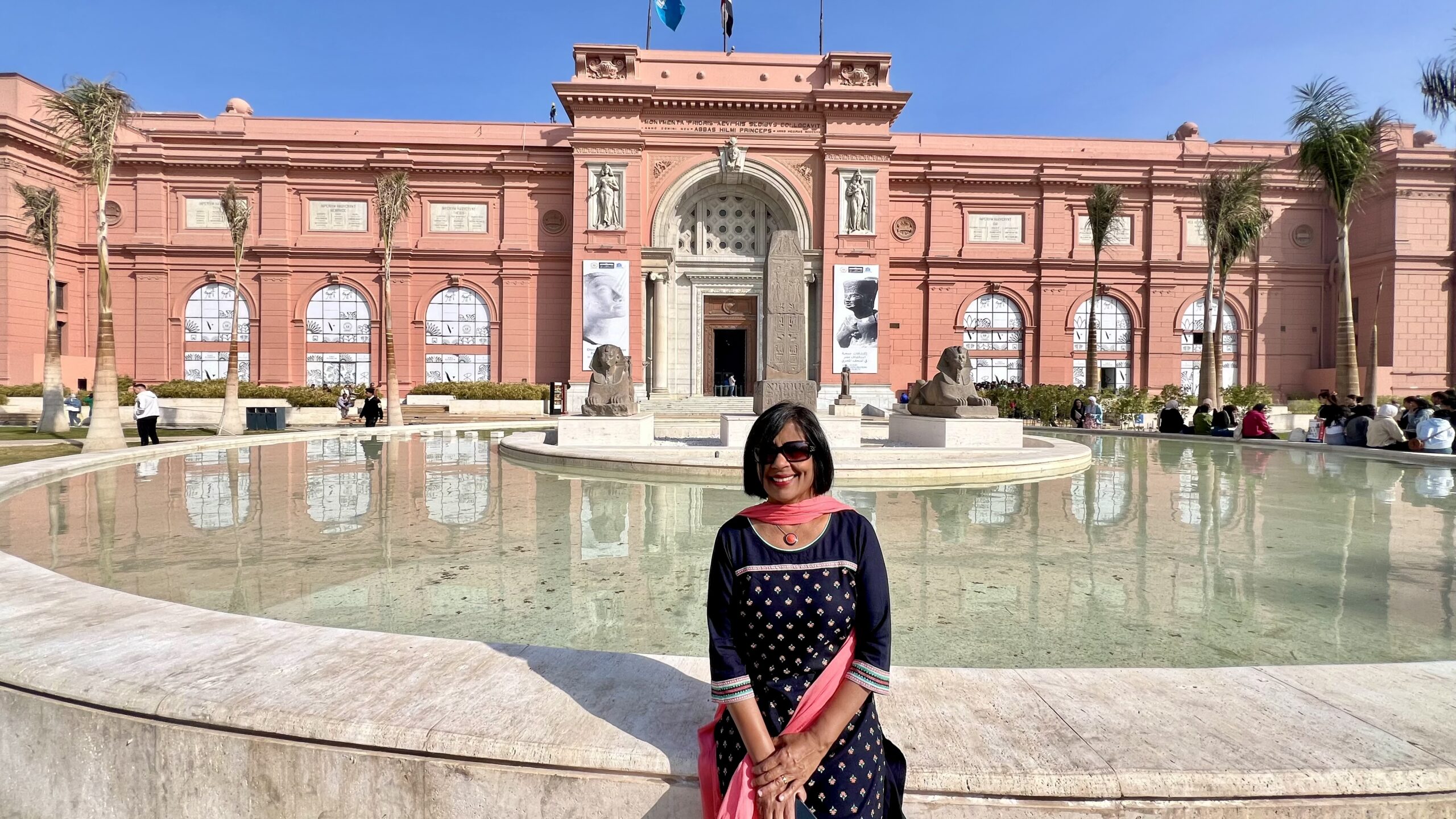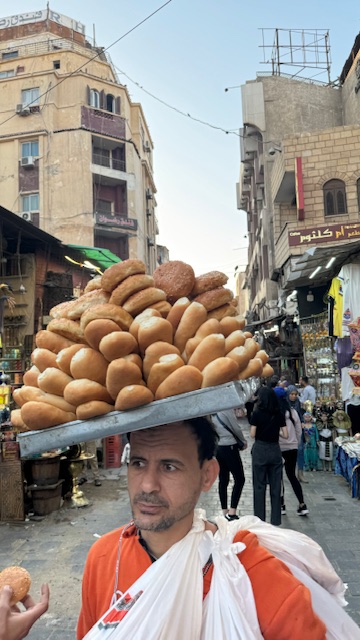Our final day was spent visiting the sites around Cairo, starting with Egyptian Museum.
- Egyptian Museum
- Coptic Cairo
- Islamic Cairo
- Khan el-Khalili market
Egyptian Museum – The Museum houses the largest collection of Egyptian antiquities in the world. Among its masterpieces are the treasures found in Pharaoh Tutankhamun’s tomb, including the gold mask he was buried in.

The Main floor has a wide collection of sarcophagus and statues on display. The sarcophagus are made out of a variety of materials – granite, wood, alabaster, and limestone. At the far end of hall is the Colossal statue of Amenhotep III and his wife Tiyi.
Other interesting displays inside the museum include – the statue of Pharaoh Chephren or Khafre, famous for its exceptional craftsmanship and details, Sphinx of Queen Hatshepsut, Oldest wooden statue, Tutankhamun’s tomb treasures, objects used in daily life, and a huge collection mummies and ornately painted coffins.







Pharaonic objects – Room 34 in the museum contains a variety of objects used in everyday lives of ancient Egyptians, many of them still in use today. They include measuring tools, kitchen items, musical instruments, farming and building tools, and boomerangs for hunting birds.





Mummies and coffins – The museum has a huge collection of mummies and beautifully painted wooden, stone, and metal coffins.



Coptic Cairo – Coptic Cairo is known as the stronghold of Christianity in Old Cairo, home to places of worship that date back to the time when the pharaonic religions of Ancient Egypt had died out and Islam had not yet arrived. Some of Egypt’s earliest churches remain standing in Coptic Egypt to this day – some dating back to the 4th century AD. The compound contains many churches, a Jewish synagogue, and the Coptic museum. The area was settled in the 6th century by the Persians, who built the fortress. After the Romans took over Egypt, they fortified the stronghold to stand against invaders.

The Abu Serga church is believed to be not only the oldest church in Egypt, but built on the spot where the Holy Family (Joseph, Mary, and infant Jesus Christ) stopped and rested towards the end of their journey to Egypt.


Ben Ezra Synagogue – Originally a Coptic Church, Abraham Ben Ezra from Jerusalem bought the church and converted it to a synagogue. It’s believed to be the spot where the baby Moses was found. The current structure dates back to 1892 after a series of renovations. Due to the huge decline in the Jewish community in Cairo, the synagogue now functions as a museum and a tourist attraction as opposed to an operating place of worship.
The Church of St. Barbara is another extremely old church, with priceless relics most of which have been moved to the Coptic Museum. Although the church itself has been rebuilt and restored several times, items from the original church are believed to date back to the 5th or even 4th century.



Islamic Cairo – The city of Cairo has hundreds, of mosques, many of which are open for public visits. Islamic Cairo is where some of the oldest mosques in Egypt are located. Also called Medieval Cairo or Historic Cairo and an UNESCO World Heritage Site, Islamic Cairo is the city’s historic area that existed before Cairo’s 19th and 20th-century modern expansion.
We visited the Al-Azhar Mosque. Founded in 970 AD at the centre of the former capital Fatimid Caliphate, the building has seen several architectural additions over the years, giving it a unique appearance and blend of styles. The three minarets were added in the 14th, 15th, and 16th centuries to the madrassa built in 988 AD. The madrassa is the world’s second-oldest educational institution and the modern campus is one of the most prestigious places to study Sunni theology.



Khan el-Khalili market – This Egyptian bazaar(souq) is a bustling, vibrant, and colorful market, that has been around for centuries and is located in the heart of Islamic Cairo. It is filled with shops, stalls, restaurants, and cafes selling everything from spices to jewelry to souvenirs. We spent an hour walking around the bazaar, enjoying the colorful displays.


